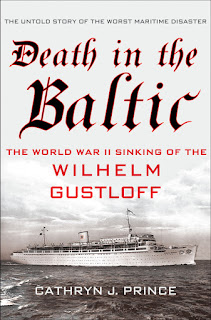Cathryn J. Prince is the author of the new biography Queen of the Mountaineers: The Trailblazing Life of Fanny Bullock Workman, which focuses on a pioneering mountain climber born in 1859. Prince's other books include American Daredevil and Death in the Baltic. She lives in Weston, Connecticut.
Q: How did you first learn about Fanny Bullock Workman, and
why did you decide to write her biography?
A: For this one, it was different. I usually find out about
someone through casual conversations. With this book, I did want to write about
a strong woman. So many of my books are focused mostly around men.
This was a more deliberate choice, and I started looking
through different histories, to find who hadn’t been written about. I came
across her, I can’t remember where. The first thing that drew me to her was
that I saw one of her portraits. I thought she looked formidable.
Then, in deciding to write about her, [I found that] she
exemplifies debates now over professional women and motherhood. She ran into societies
and memberships where people were telling her she’s a woman and she didn’t let
it thwart her.
The first thing I learned about her was about her bicycle
rides. She rode in woolen outfits on bikes for 14,000-mile trips, for
6,000-mile trips. I thought, this is an interesting lady! And there was the
climbing, to the Himalayas. And the class and maternal issues that come into
play.
Q: Can you say more about how you researched this book, and
what did you learn that especially intrigued you?
A: For her, I went to Scotland, to the National Library in
Edinburgh. They have her journal and her husband’s journal. For Annie Peck, her
rival, her papers are at Brooklyn College. Other researchers were really
helpful. The Alpine Club in Britain’s members were really nice about finding
documents for me.
There was a lot more correspondence for Annie Peck than for
Fanny Workman. She was a little harder nut to crack. She was not touchy-feely.
Their daughter bequeathed everything to a trust in Scotland.
Q: How would you describe the relationship between Workman
and her rival, Peck?
A: They never met, but I felt they were so aware of the
other’s presence. And they got into a controversy over the height of a mountain
[involved in their climbing]. I thought about how it would feel to have someone
shadowing you.
I felt they respected what the other was doing. They didn’t
think we’re women, we should boost each other. They were competitive. It was
about the sport and the numbers. And that’s how it should be. They didn’t play
nice with each other.
If you look at men in the same situation, it would be the
same thing. It was probably admiration and respect, and then the best person
wins.
There was one instance where the papers wanted to make
something over two women fighting, and Annie Peck said we’re not having that,
it’s about the altitude.
Q: Your previous book was a biography of the travel writer
Richard Halliburton. How would you compare the two?
A: I thought there were some similarities. Both defied
societal conventions and family expectations. And there were some similarities
between their views of European-American superiority. She has a class snobbery
about her when commanding teams of porters.
And both were trying to make careers of writing. He was
definitely the better writer.
And there’s their notion of family, which was not
conventional. Richard Halliburton had a longtime partner. She has two children
but leaves them.
Also, maybe they were both not entirely likeable, but that’s
beside the point. To me, it’s that they’re complex, compelling, and
fascinating, not that she wasn’t the sweetest woman on earth.
Q: What are you working on now?
A: I know I want to do something with Vietnam. My dad served
in the war. He was there in ’63-’64. We did a second trip back to Vietnam. I
started reading, and am hoping I’ll find [a subject].
Q: Anything else we should know?
A: I’m interested in the way people were exploring then,
compared to now. There was so much gear they would go with. You would need
upward of 50 to 60 people to help you move. And now, climbers go up with very
little equipment.
She would wear a skirt—she was savvy. She knew she’d stand
out.
--Interview with Deborah Kalb. Here's a previous Q&A with Cathryn J. Prince.




No comments:
Post a Comment